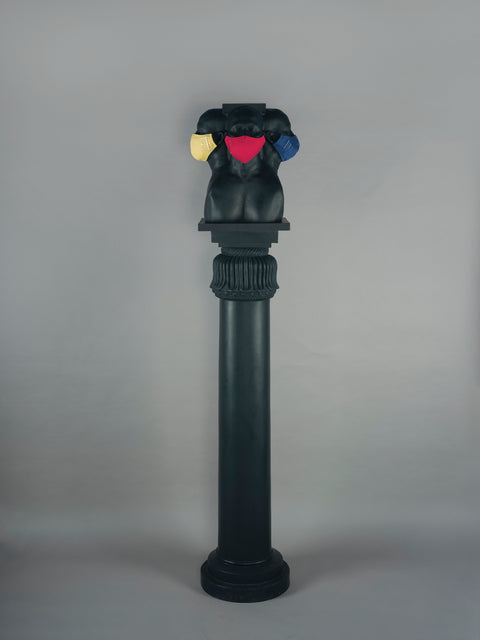Blodsow V S
Strategies of viewership are as much implicit in works of art as strategies of depiction. Impressionism onwards, many artists have chosen to comment on the epistemology of vision, of seeing. Seeing is an exterior art. But sight is yoked to insight and can, often, be an interior process too. Blodsow’s canvases inexorably lead you to a conversation between the surreal and the hyper-real. They confront us with the unreason of dazzlement when too much light in the eye, in fact, produces a haze. It is the kind of predicament experienced by someone who stares into the sun – and can see nothing. The spectator here feels he has been hung ‘upside down’. There is a fusion here of the eye and the sun – an impossible image of a luminescence that can only be blinding and cannot be seen. A dazzling of vision that is evoked through a procession of sun-drenched, solarised – but incandescently coloured – retinal after images that the artist rolls out before us.
Blodsow’s canvases are like some early 20th century optic experiment on the relation between increase in sensation through an increase in stimulus; a peek ‘in between the penumbras’ of the mind. They alert us also to the immanence of “measuring the ‘idea’ of smelling”.
The more elaborate those experiments, the more they seemed to flag the possibility of a fear of ‘observation’. Blodsow’s critical eye spots the ‘stagnation of the observer’ within a linear optical system, a static position contradicted by the covetousness of his aspirations. It is the inherent schizophrenia of Capitalism, which is constantly objectifying subjectivity.
But here, the observer is compelled to look and come to terms with her/his own subjectivity. The individual as observer becomes an object of his own investigation. The canvas becomes the fuzzy map of her/his own fragmented personality.
What is revealed is a contemporary ambulatory observer shaped by her/his proximity to reflective public spaces like plate glass, mirror, artificial lighting, shadows and photography. There is no access here to a single image. Vision is always multiple, adjacent to and overlapping with other objects, desires, conflicts and illusions. Like, forever looking through a black box.




